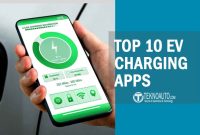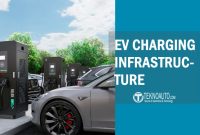You’ve probably seen them on the road—cars that glide silently for a few blocks before the hum of a gasoline engine kicks in. They don’t stop at charging stations every night, but they also don’t rely solely on fossil fuel. These are Plug-in Hybrid Electric Vehicles (PHEVs), and in 2025, they’re becoming harder to ignore.
Some drivers choose them for their flexibility. Others like the lower fuel costs. A few simply appreciate the convenience of electric driving without worrying about range. Whatever the reason, PHEVs are gaining traction with people who want a smarter, smoother transition to electric mobility—without fully cutting ties with the pump just yet.
This article takes a closer look at where PHEVs fit in the modern automotive landscape. From how they work and who they’re best for, to how they compare with hybrids and full EVs, we’ll walk through everything you need to know—practically and clear.
What Is a Plug-in Hybrid Electric Vehicle (PHEV)?
A Plug-in Hybrid Electric Vehicle (PHEV) uses both a traditional internal combustion engine and an electric motor, powered by a rechargeable battery that can be plugged in to charge.
Unlike conventional hybrids (HEVs), which charge their batteries through regenerative braking and the combustion engine alone, PHEVs can also be plugged into an external power source—hence the name “plug-in.” This gives them the ability to drive solely on electric power for a certain range before switching to hybrid mode when the battery is depleted.
Most PHEVs offer between 25 to 60 miles of electric-only range, which is enough to cover the average daily commute for many drivers without using a single drop of fuel. Once the battery is low, the gasoline engine automatically kicks in, extending the total range to that of a traditional vehicle.
This dual EV Powertrain system not only improves fuel economy but also provides flexibility for long-distance travel, eliminating the “range anxiety” often associated with fully electric vehicles (BEVs).
Key components of a PHEV include:
- Internal Combustion Engine (ICE)
- Electric Motor
- High-voltage Battery Pack
- Onboard Charging System
- Power Control Unit (for seamless energy management)
In essence, PHEVs offer a transitional solution—ideal for drivers who want the environmental benefits of electrification without committing to the limitations of battery-only vehicles.
How PHEVs Work: Dual Powertrain Explained

At the heart of every Plug-in Hybrid Electric Vehicle (PHEV) is a dual powertrain system—a smart combination of an internal combustion engine (ICE) and one or more electric motors powered by a rechargeable lithium-ion battery.
This architecture allows PHEVs to switch seamlessly between electric-only driving, hybrid mode, or a combination of both, depending on speed, load, terrain, and battery charge level.
Electric-Only Mode
When the battery is sufficiently charged, a PHEV can run solely on electric power for short to medium distances—typically between 25 to 60 miles. In this mode, the vehicle produces zero tailpipe emissions, operates quietly, and offers excellent efficiency, especially for city driving and daily commutes.
Hybrid Mode (Electric + Gasoline)
Once the battery reaches a low threshold or when higher power is needed (e.g., highway acceleration or climbing hills), the vehicle automatically transitions to hybrid mode.
In this state, the gasoline engine and electric motor work together or alternate to deliver optimal performance and fuel economy. The transition is managed by an onboard control unit, often undetectable to the driver.
Regenerative Braking
PHEVs use regenerative braking to recover kinetic energy during deceleration, converting it into electricity and storing it back in the battery. While not enough to fully recharge the battery, this feature improves overall efficiency.
Plug-in Charging
The defining feature of a PHEV is its ability to charge externally via a standard wall outlet (Level 1) or a faster home/public EV charger (Level 2). Charging times vary based on battery capacity and charger type, typically ranging from 2 to 6 hours.
This dual-source approach offers an ideal balance: electric efficiency for short trips, and gasoline backup for longer journeys—all without the need to stop frequently for refueling or charging.
Key Benefits of PHEVs
Plug-in Hybrid Electric Vehicles (PHEVs) are not just a halfway point between gasoline and electric cars—they’re a well-calculated balance of efficiency, flexibility, and practicality. Let’s explore the core advantages that make them a smart choice for many drivers in 2025.
Fuel Savings and Lower Operating Costs
By relying on electric power for short trips, PHEVs can drastically reduce gasoline consumption. Many owners report using fuel only for longer journeys or occasional highway driving. With electricity generally cheaper than gasoline per mile, the total cost of ownership often becomes lower over time, despite the higher upfront price of the vehicle.
Reduced Emissions and Greener Commutes
PHEVs produce significantly fewer tailpipe emissions compared to traditional internal combustion engine (ICE) vehicles, especially during all-electric operation. For urban commuters, this translates to a lower carbon footprint—especially when the electricity source is clean or renewable. This makes PHEVs a more sustainable option without fully giving up the convenience of gas.
Electric-Only Driving Flexibility
Unlike standard hybrids, PHEVs allow you to choose when to drive electric. For daily errands or short commutes under 40 miles, you may never need to activate the gasoline engine at all. This gives the driver greater control over fuel usage and environmental impact.
No Range Anxiety
EV range anxiety is a major concern for full electric vehicles. PHEVs eliminate this issue by offering a backup gasoline engine that seamlessly takes over when the battery is depleted. It’s a reassurance that’s particularly appealing for drivers in areas with limited EV charging infrastructure.
Home Charging Convenience
With a standard wall outlet or a Level 2 home EV charger, PHEV owners can recharge overnight, avoiding fuel stations altogether for daily travel. Since most PHEVs have smaller batteries than BEVs, they charge faster and don’t necessarily require expensive infrastructure upgrades.
Government Incentives and Tax Credits
In many regions, PHEVs still qualify for federal tax credits, state incentives, and discounted tolls or carpool access. These perks can significantly lower the effective purchase price and enhance the value proposition over traditional vehicles.
Charging a PHEV: What You Need to Know
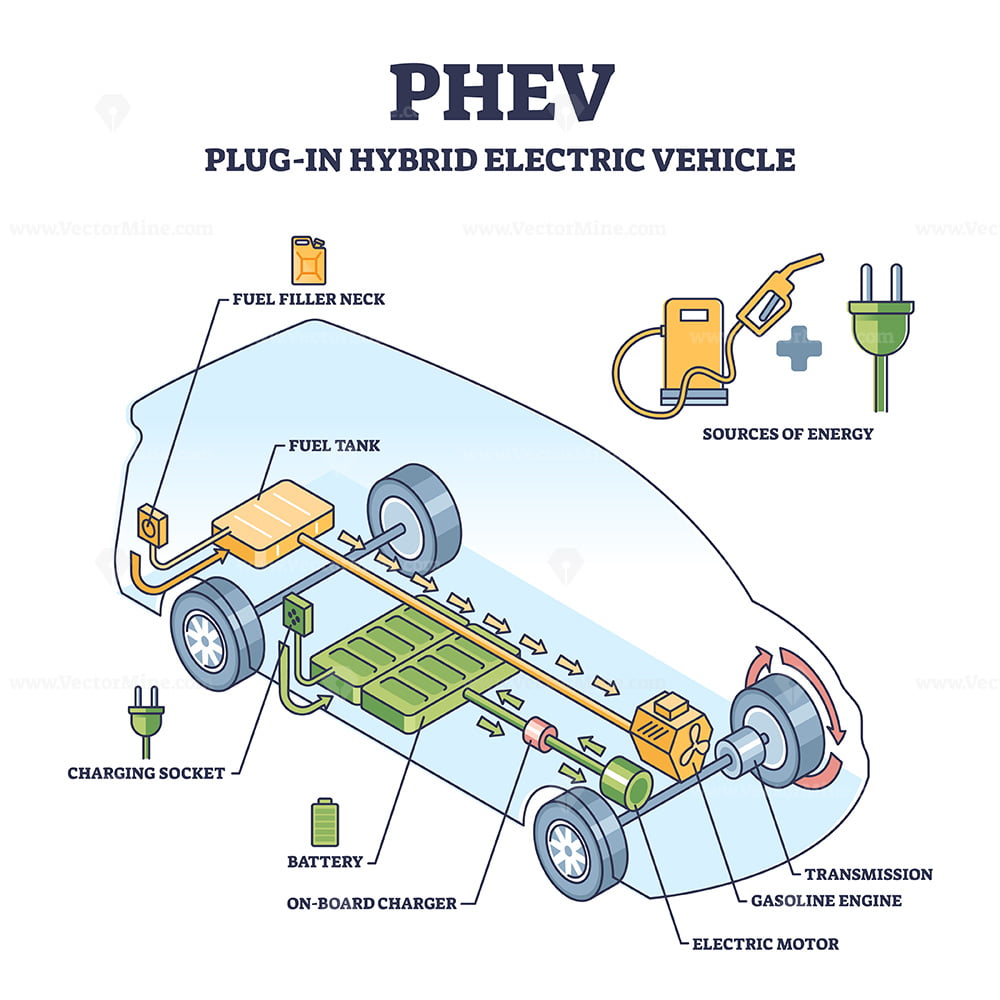
While Plug-in Hybrid Electric Vehicles (PHEVs) don’t require charging to operate—thanks to their gasoline engines—charging regularly is essential to maximize fuel savings and environmental benefits. Unlike fully electric vehicles (BEVs), PHEVs have smaller batteries, which makes them quicker and easier to recharge, even from a standard household outlet.
Charging Methods
There are three primary ways to charge a PHEV, each varying in speed, convenience, and cost:
- Source: Standard household outlet
- Charging Time: 6–12 hours (depending on battery size)
- Best For: Overnight charging at home; convenient and requires no installation
- Source: Home charging stations or public chargers
- Charging Time: 2–4 hours
- Best For: Faster daily charging, ideal for regular EV users
- Note: May require installation of a dedicated wall box at home
- Not typically supported by PHEVs due to their smaller battery packs
- Exception: A few newer PHEVs may offer limited fast-charging capabilities
Where Can You Charge?
- At Home: Home is the most common and convenient charging location. Since most PHEVs don’t require much power, Level 1 charging is often sufficient for overnight top-ups.
- Public Charging Stations: Available in shopping centers, workplaces, and along highways. Many apps (like PlugShare, ChargePoint, or Google Maps) help drivers locate available chargers nearby.
- Workplace Charging: More businesses are installing EV chargers for employees. Charging while at work can ensure your battery is full for the drive home.
Cost of Charging
Charging a PHEV is significantly cheaper than fueling with gasoline, especially when charging at home during off-peak electricity hours. On average:
- A full charge costs between $0.75 to $2.50, depending on your electricity rates and battery size.
- That charge can provide 25–60 miles of electric driving—enough for many daily commutes.
Charging Habits Matter
To get the most from your PHEV:
- Charge consistently: Driving on electricity is cleaner and cheaper than using gas.
- Plan your routes: Use EV range for city or short trips, save gasoline for highways or emergencies.
- Monitor charging times: Learn how long your car takes to recharge so it fits your schedule.
Regular charging transforms a PHEV from a hybrid into a true electric-first vehicle. With consistent habits, owners can cut fuel use by 50% or more—while still enjoying the confidence of a gasoline engine when needed.
Limitations and Challenges of PHEVs
While Plug-in Hybrid Electric Vehicles (PHEVs) offer a compelling blend of efficiency and versatility, they’re not without their trade-offs. Understanding their limitations is key to making an informed decision—especially if you’re weighing them against fully electric vehicles (BEVs) or conventional hybrids (HEVs).
Higher Upfront Cost
PHEVs typically come with a higher sticker price than both traditional gas-powered cars and standard hybrids. This is due to their dual powertrain system, onboard battery, and advanced electronics. Although tax incentives and fuel savings can offset the cost over time, the initial investment may be a barrier for some buyers.
Added Weight and Reduced Cargo Space
Combining a combustion engine with an electric motor and battery increases the overall weight of a PHEV. This extra bulk can affect handling and performance, especially in smaller vehicles. In addition, the battery pack often takes up trunk or underfloor space, which can limit cargo capacity compared to gas-only models.
Battery Size and Limited Electric Range
Most PHEVs offer modest electric-only ranges, usually between 25–60 miles. While this is sufficient for daily commutes, it’s relatively small compared to BEVs. Drivers expecting full EV performance may feel limited by the shorter range and occasional need for gas.
Maintenance Complexity
Because PHEVs have two systems under the hood—an internal combustion engine and an electric drivetrain—maintenance can be more complex and potentially more expensive in the long term. While electric components tend to be low-maintenance, the gas engine still requires oil changes, filters, and regular servicing.
Fuel Efficiency Drops on Long Trips
PHEVs shine in short-distance, battery-powered scenarios. But on long highway drives, once the battery is depleted, the vehicle functions like a traditional hybrid. In this mode, its fuel economy may be lower than a purpose-built hybrid due to the added weight and design trade-offs.
Charging Infrastructure Considerations
Though PHEVs are less dependent on public charging than BEVs, owners still need to plug in regularly to get the most out of the vehicle. Without consistent charging habits, a PHEV can lose much of its efficiency advantage and essentially become a standard hybrid—defeating its primary purpose.
Popular Plug-in Hybrid Models in 2025
As consumer interest in electrified vehicles continues to grow, the plug-in hybrid market in 2025 is seeing significant expansion—not just in volume, but in diversity and innovation. Today’s PHEVs are no longer just eco-conscious choices; they are well-rounded vehicles that offer style, performance, and practicality for a wide range of drivers.
Below, we explore some of the most popular and competitive PHEV models in 2025, each offering unique features, driving dynamics, and electric ranges tailored to different lifestyles and needs.
Toyota Prius Prime (2025)

The Toyota Prius Prime continues to be one of the most recognizable names in the PHEV category. In 2025, it returns with sleeker styling, improved performance, and enhanced electric range.
- Electric Range: ~44 miles
- Total Range: ~600 miles
- Battery Size: 13.6 kWh
- Strengths: Reliability, fuel efficiency, affordability
- Ideal For: Daily commuters and budget-conscious eco-drivers
The Prius Prime strikes a balance between familiarity and innovation. With Toyota’s proven hybrid technology, it remains a smart, no-nonsense choice for those making the transition to electrification.
Mitsubishi Outlander PHEV
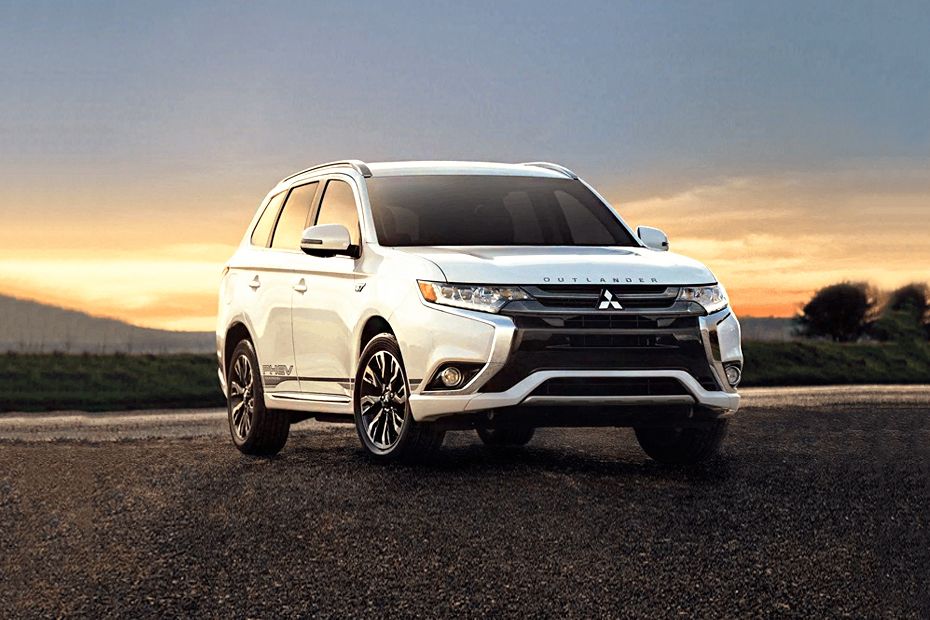
A standout in the SUV segment, the Outlander PHEV combines all-wheel-drive capability with a spacious interior and solid electric range.
- Electric Range: ~38 miles
- Total Range: Over 400 miles
- Battery Size: 20 kWh
- Strengths: AWD system, generous cargo space, 7-passenger option
- Ideal For: Families and weekend adventurers
What sets the Outlander apart is its versatility—it’s one of the few PHEVs with off-road capabilities, making it ideal for drivers who want electric efficiency without giving up all-terrain performance.
Ford Escape Plug-in Hybrid

Ford’s Escape PHEV brings American practicality to the table, with solid performance and a flexible interior in a compact SUV package.
- Electric Range: ~37 miles
- Total Range: ~520 miles
- Battery Size: 14.4 kWh
- Strengths: Smooth ride, user-friendly infotainment, hybrid efficiency
- Ideal For: Urban drivers, young families, light SUV users
The Escape Plug-in Hybrid is especially appealing to buyers who want the utility of an SUV but without the weight and price of a large electrified crossover.
Hyundai Tucson Plug-in Hybrid
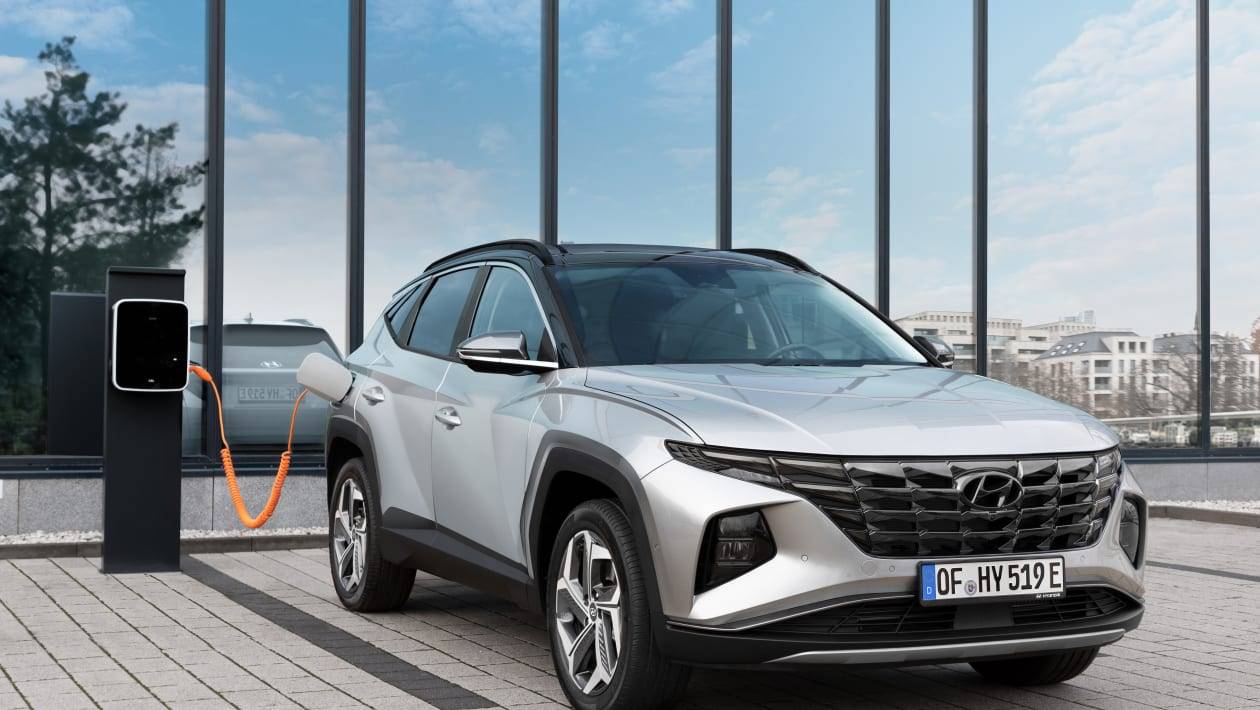
Hyundai’s Tucson PHEV blends clean, modern design with high-tech features and a solid EV-only range.
- Electric Range: ~33 miles
- Total Range: ~420 miles
- Battery Size: 13.8 kWh
- Strengths: Interior technology, advanced safety systems
- Ideal For: Tech-savvy drivers, young professionals
In 2025, the Tucson PHEV stands out for its infotainment interface and semi-autonomous car driver assistance. It’s ideal for those who prioritize in-car experience as much as efficiency.
BMW 330e
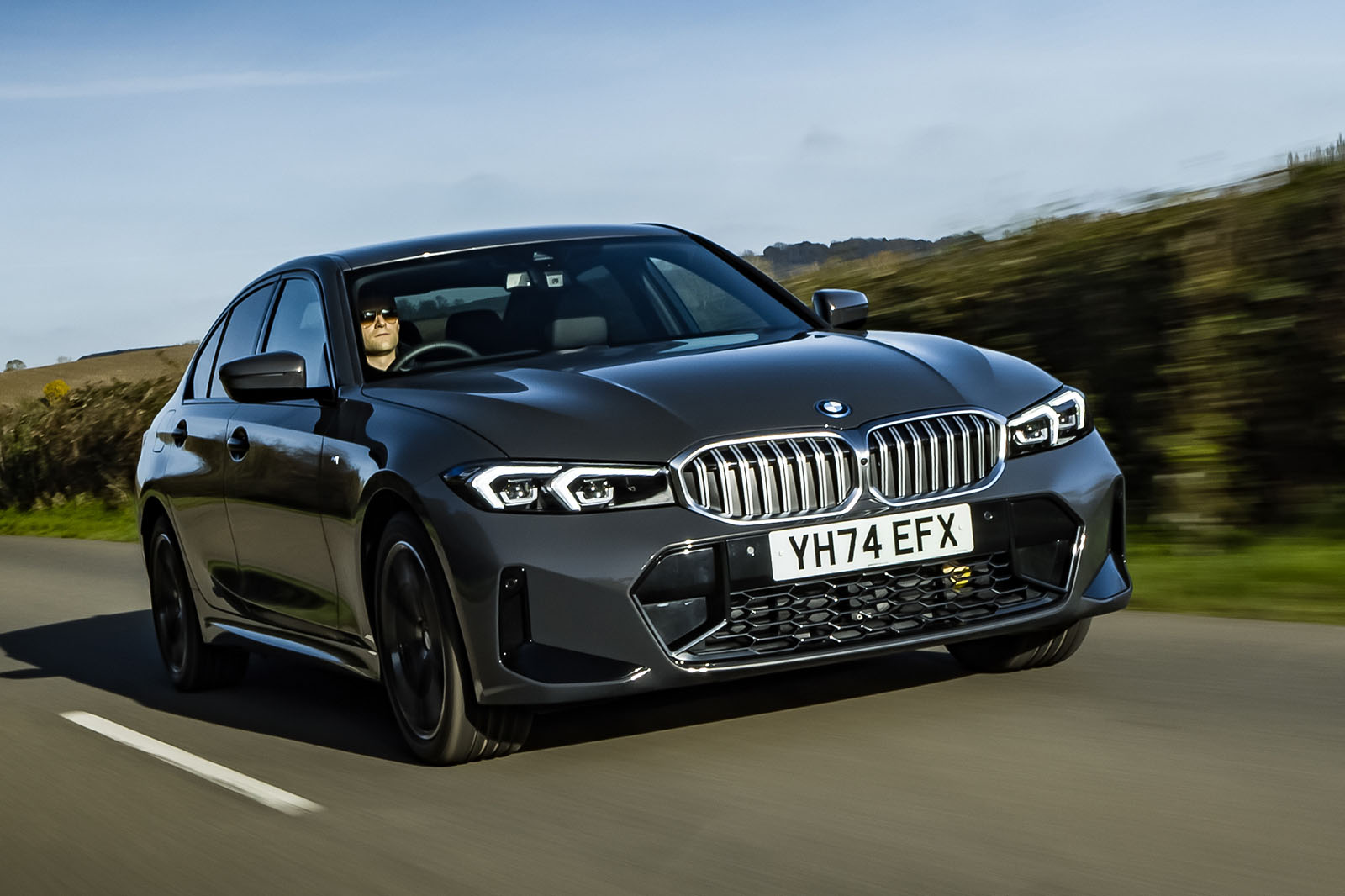
BMW brings luxury to the PHEV market with the 330e sedan, combining performance driving with electric range.
- Electric Range: ~23 miles
- Total Range: ~370 miles
- Battery Size: 12 kWh
- Strengths: Dynamic driving, luxury interior, build quality
- Ideal For: Executives and enthusiasts seeking performance + green credentials
While the EV range is modest, the 330e delivers an engaging drive and the refinement expected of a premium German sedan, perfect for those who don’t want to compromise driving pleasure for sustainability.
Jeep Grand Cherokee 4xe

A rugged and luxurious SUV, the 4xe version of the Grand Cherokee combines off-road DNA with plug-in efficiency.
- Electric Range: ~25 miles
- Total Range: ~470 miles
- Battery Size: 17 kWh
- Strengths: Trail-rated performance, premium features
- Ideal For: Adventure-focused drivers and high-end SUV buyers
This PHEV is one of the few models that caters to outdoor enthusiasts, offering electric drive even on rugged trails.
Volvo XC60 Recharge
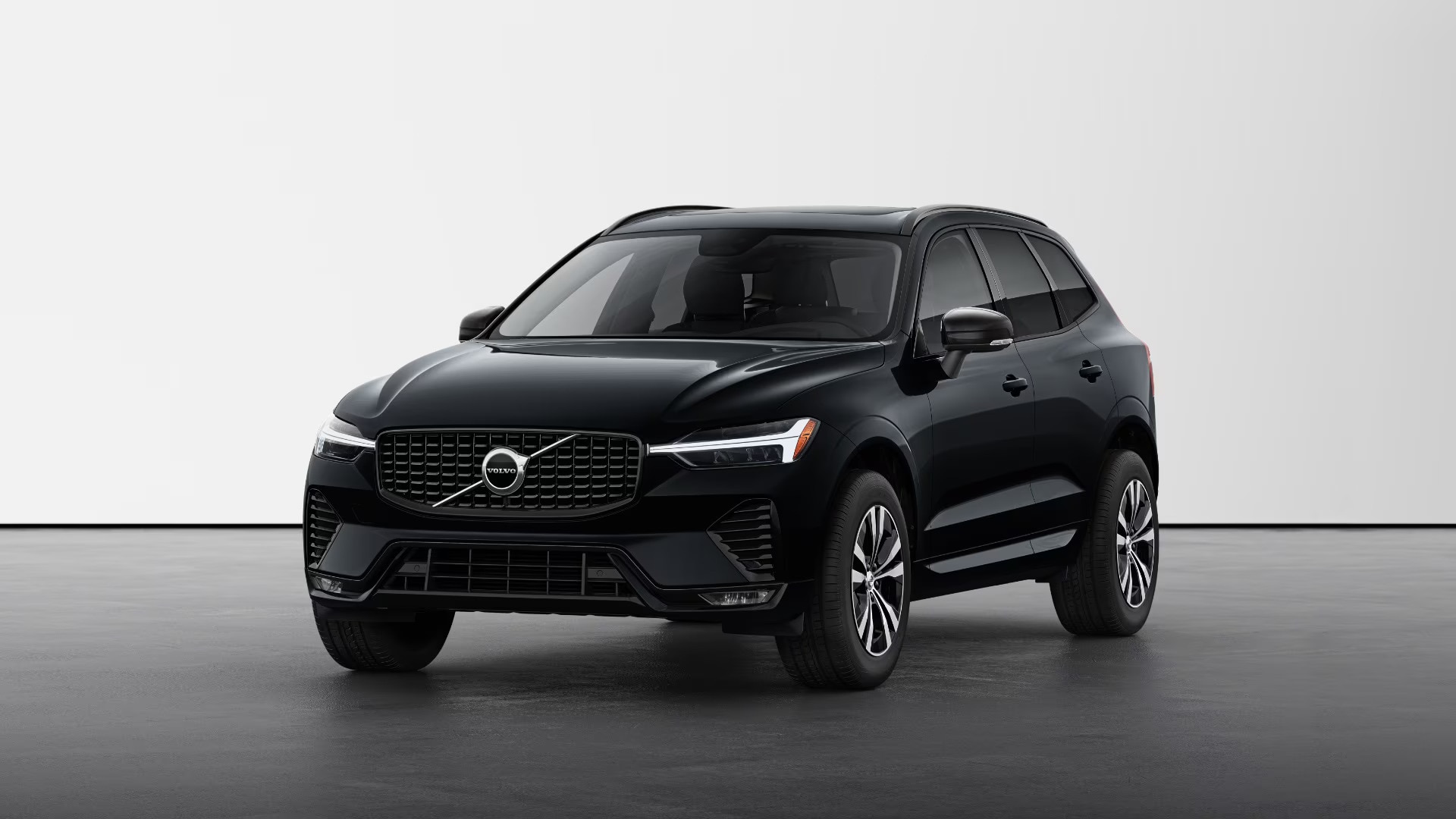
Volvo continues its electrification strategy with the XC60 Recharge, a mid-size luxury SUV that places equal weight on sustainability and Scandinavian design.
- Electric Range: ~40 miles
- Total Range: ~520 miles
- Battery Size: 18.8 kWh
- Strengths: Elegant design, advanced safety, clean cabin air tech
- Ideal For: Eco-conscious luxury buyers and families
With a minimalist interior and cutting-edge driver assistance, the XC60 Recharge is ideal for those who see design and responsibility as equally important.
Comparison Table: Popular PHEVs in 2025
| Model | Electric Range (mi) | Battery Size (kWh) | Total Range (mi) | Vehicle Type | Best For |
|---|---|---|---|---|---|
| Toyota Prius Prime | 44 | 13.6 | 600 | Sedan | Efficiency and reliability |
| Mitsubishi Outlander PHEV | 38 | 20 | 400+ | SUV (AWD) | Families & off-road use |
| Ford Escape Plug-in Hybrid | 37 | 14.4 | 520 | Compact SUV | Urban lifestyle & flexibility |
| Hyundai Tucson PHEV | 33 | 13.8 | 420 | SUV | Tech-focused commuters |
| BMW 330e | 23 | 12 | 370 | Sedan (Luxury) | Driving performance & comfort |
| Jeep Grand Cherokee 4xe | 25 | 17 | 470 | SUV (Trail-rated) | Rugged travel with electric edge |
| Volvo XC60 Recharge | 40 | 18.8 | 520 | SUV (Luxury) | Eco-luxury and Scandinavian style |
What to Expect Going Forward
As battery technology improves and EV infrastructure expands, PHEVs in 2025 are more capable, efficient, and diverse than ever before. From affordable commuter cars to luxury crossovers and off-road-ready SUVs, there’s a plug-in hybrid for nearly every type of driver.
The next wave of PHEVs will likely feature:
- Longer electric-only ranges
- Faster charging times
- Lighter, more energy-dense batteries
- More integration with smartphone ecosystems and over-the-air updates
These innovations make PHEVs a forward-thinking choice for anyone not quite ready to go fully electric—but still eager to reduce emissions, fuel costs, and dependency on gas.
PHEV vs Other Electrified Vehicles
Plug-in Hybrid Electric Vehicles (PHEVs) are often described as the “best of both worlds” in electric mobility. They offer electric-only driving for short distances and seamlessly switch to gasoline for longer trips. But how do they compare to the other Types of Electric Vehicles?
Let’s break down the differences between PHEVs and their closest relatives: HEVs, BEVs, and FCEVs.
PHEV vs HEV (Hybrid Electric Vehicle)
At a glance, PHEVs and Hybrid Electric Vehicles (HEVs) seem similar—they both have an internal combustion engine and an electric motor. However, their core difference lies in charging and range. HEVs cannot be plugged in, and they rely entirely on regenerative braking and the engine to recharge their batteries. This limits the electric driving range to just a few miles.
In contrast, PHEVs offer a meaningful electric-only mode—typically 20 to 50 miles—and require external charging to maximize fuel savings and emissions reduction.
- Electric range: PHEV wins
- Charging flexibility: HEV requires no charging
- Efficiency in city driving: HEV shines with constant regenerative braking
- Ideal user: PHEV is better for mixed driving (urban + highway); HEV suits those without charging access
PHEV vs BEV (Battery Electric Vehicle)
A Battery Electric Vehicle (BEV) is a fully electric vehicle with no gasoline engine at all. It runs entirely on battery power and produces zero tailpipe emissions. While this is ideal for sustainability, it also requires reliable access to charging infrastructure.
PHEVs, on the other hand, allow short electric driving without range anxiety, thanks to the backup gasoline engine. However, they are heavier and less efficient in EV mode compared to BEVs.
- Emissions: BEV is superior (zero-emission)
- Range flexibility: PHEV has advantage for long trips without EV infrastructure
- Charging dependency: BEVs need regular access; PHEVs can operate without
- Ideal user: BEV for green-focused drivers; PHEV for those transitioning to full EV life
PHEV vs FCEV (Fuel Cell Electric Vehicle)
Fuel Cell Electric Vehicles (FCEVs) use hydrogen fuel cells to generate electricity on demand, emitting only water vapor. They offer fast refueling and long range, much like gasoline cars. However, they rely on hydrogen infrastructure, which is still limited in most parts of the world.
PHEVs are more widely usable due to the abundance of gas stations and growing EV charging networks. They don’t refuel as fast as FCEVs but are easier to adopt in areas without hydrogen stations.
- Refueling time: FCEV wins
- Fuel availability: PHEV more practical globally
- Emissions: Both low; FCEV has the edge if hydrogen is green
- Ideal user: FCEV for tech-forward regions; PHEV for mainstream use
Quick Comparison Table: PHEV vs HEV vs BEV vs FCEV
| Feature / Category | PHEV | HEV | BEV | FCEV |
|---|---|---|---|---|
| Electric Range | 20–50 miles (EV mode) | Very limited | 150–400 miles | 300–400 miles |
| Gasoline Backup | Yes | Yes | No | No |
| Plug-in Charging | Yes | No | Yes | No |
| Refueling Time | 2–4 hours (charging) + gas | No plug; gas only | Hours depending on charger | 3–5 minutes (hydrogen) |
| Emissions | Low to zero | Lower than conventional | Zero | Zero (if using green hydrogen) |
| Fuel Availability | Widely available | Widely available | Growing charging network | Very limited infrastructure |
| Best For | Flexible urban + highway | Simpler fuel savings | Clean daily driving | Fast zero-emission long trips |
The PHEV is positioned as a “best of both worlds” solution: delivering electric savings and low emissions for everyday driving, while retaining the flexibility of a traditional engine for long trips or charging-limited environments. It bridges the gap between familiar gasoline-powered mobility and the growing electric future—making it a strategic choice for today’s transitional period.
Environmental Impact of PHEVs
Plug-in Hybrid Electric Vehicles (PHEVs) offer an important environmental advantage over traditional internal combustion engine (ICE) vehicles, especially when driven in electric mode. However, they still have a measurable impact—one that varies based on how often they’re charged, how they’re driven, and the source of the electricity used.
Reduced Greenhouse Gas Emissions
PHEVs produce zero tailpipe emissions while operating in electric-only mode. For short commutes or stop-and-go traffic, they can run almost entirely without burning fuel. This significantly reduces CO₂ emissions, especially in urban environments where air pollution and vehicle congestion are major concerns.
However, once the gasoline engine kicks in, emissions are similar to those of a conventional hybrid. This is why the frequency of charging matters:
- Fully charged, daily-driven PHEVs can reduce GHG emissions by up to 60% compared to ICE vehicles.
- Rarely charged PHEVs lose most of their environmental benefits and become no better than conventional hybrids.
Impact of Electricity Source
The overall carbon footprint of driving a PHEV also depends on where your electricity comes from:
- In regions with renewable-heavy grids (solar, wind, hydro), the emissions from charging a PHEV are very low.
- In areas relying on coal or natural gas, the emissions are higher—but still typically lower than gasoline on a per-mile basis.
Charging at night or during off-peak hours when the grid is under less strain can also make electric driving cleaner and more efficient.
Battery Production and Recycling
Like all Electric Vehicles (EVs), PHEVs rely on lithium-ion batteries, which require mining and manufacturing processes that have environmental consequences. However, because PHEV batteries are smaller than those in BEVs, their overall impact is less intensive.
- Battery lifespan: Most modern PHEV batteries last 8–10 years or more, and many are covered under long-term warranties.
- Recycling initiatives: Manufacturers and third-party companies are improving battery recycling and reuse programs to reduce long-term waste and resource consumption.
Lifecycle Emissions Comparison
| Vehicle Type | Tailpipe Emissions | Battery Size | Grid Dependency | Total Lifecycle Emissions |
|---|---|---|---|---|
| ICE (Gasoline) | High | None | None | Highest |
| HEV | Moderate | Small | None | Lower than ICE |
| PHEV | Low (if charged often) | Medium | Partial | Lower than HEV/ICE |
| BEV | Zero | Large | High | Lowest (if powered cleanly) |
Key Takeaways:
- PHEVs are most environmentally friendly when charged daily and used in electric mode as much as possible.
- Their smaller battery size makes them less resource-intensive than full EVs.
- Real-world impact depends heavily on driving habits and local energy mix.
For drivers not yet ready to fully transition to BEVs, PHEVs provide a meaningful step toward lowering emissions, reducing fossil fuel dependence, and supporting a greener transportation future.
Conclusion
Plug-in Hybrid Electric Vehicles (PHEVs) occupy a unique space in the evolving landscape of clean transportation. By combining the convenience of gasoline with the efficiency and quietness of electric power, they offer a practical solution for drivers seeking to reduce emissions without sacrificing range or flexibility. In 2025, PHEVs have matured into highly capable, well-rounded vehicles with broad appeal—ranging from compact commuter cars to luxurious, adventure-ready SUVs.
Whether you’re an eco-conscious city driver looking to cut fuel costs, or a suburban commuter not quite ready for the full jump to battery electric vehicles, PHEVs provide a valuable middle ground. Their ability to operate in full electric mode for daily tasks, while seamlessly switching to gasoline for longer trips, makes them versatile and future-ready.
However, to maximize their environmental and financial benefits, it’s crucial to develop regular charging habits and choose a model that suits your specific driving patterns. With the right setup and usage, a PHEV can significantly lower your carbon footprint, reduce fuel dependency, and ease your transition toward a fully electrified future.
Frequently Asked Questions About Plug-in Hybrid Electric Vehicle (PHEV)
How far can a PHEV drive on electricity alone?
Most PHEVs in 2025 offer an electric-only range between 25 to 60 miles, depending on the model and battery capacity. This is often enough to cover daily commutes or errands without using any gasoline. Once the battery is depleted, the vehicle switches to hybrid mode using the internal combustion engine.
Do I need a special charger at home for a PHEV?
Not necessarily. PHEVs can be charged using a standard 120V household outlet (Level 1), which is sufficient for overnight charging. However, installing a 240V Level 2 charger can significantly reduce charging time and is recommended if faster, more consistent charging is needed.
Are plug-in hybrids more expensive to maintain?
While PHEVs have two powertrains (electric and gasoline), which can increase mechanical complexity, many components—especially on the electric side—require less frequent maintenance. Overall, they may have similar or slightly higher maintenance costs than conventional hybrids, depending on how they’re driven and maintained.
What happens if I don’t charge my PHEV?
If you don’t charge your PHEV, it will function like a regular hybrid vehicle, using regenerative braking and the gasoline engine to power the car. However, you’ll miss out on the fuel savings and environmental benefits of electric driving, which are key advantages of owning a PHEV.
Are PHEVs eligible for government incentives?
Yes, many PHEVs qualify for federal tax credits, state-level rebates, and even HOV lane access in some regions. The amount depends on the vehicle’s battery size and local regulations. Always check current incentive programs in your area before purchasing.



